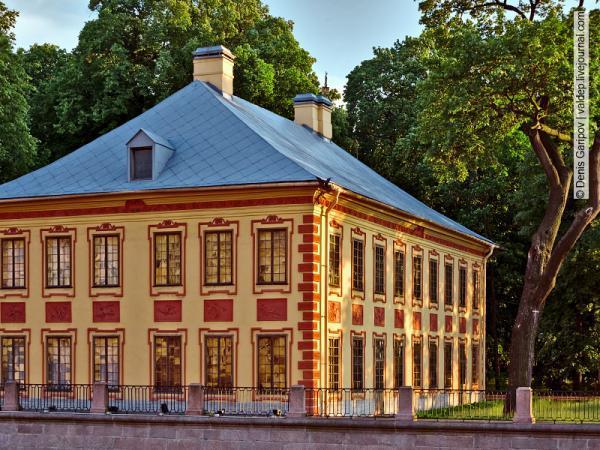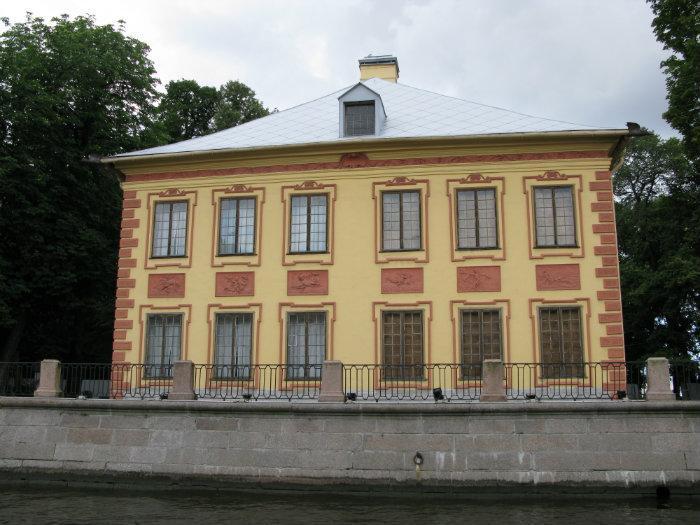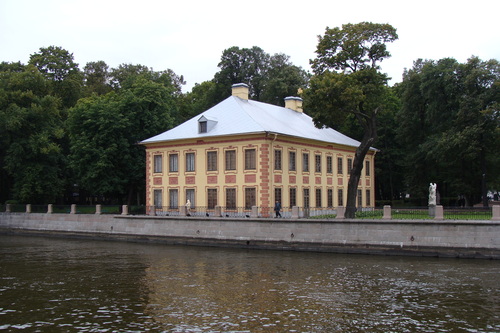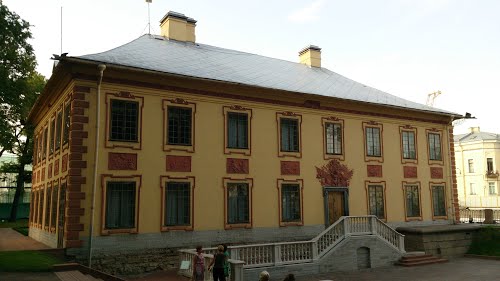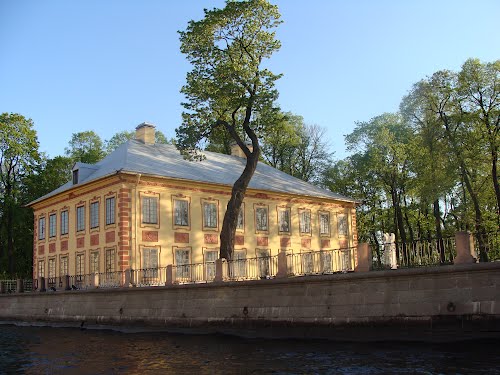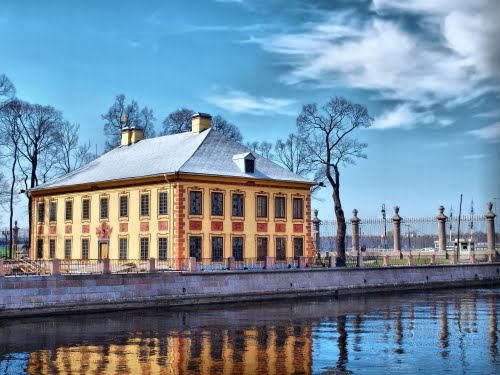The Summer Palace of Peter the Great was built between 1710–1714 in the northeast corner of the Summer Garden that sat on an island formed by the Fontanka river, Moyka river, the Swan Canal and has the railings of its northern perimeter running along the left bank of the Neva river across from the Cabin of Peter the Great and Peter and Paul Fortress and was the first palace built in Saint Petersburg, the second largest city in Russia.
Construction
The Summer Palace was first planned in 1710 by Peter the Great and built by the Swiss Italian architect Domenico Trezzini, who elaborated the Petrine Baroque style of Russian architecture, as a two-storied stone building with four-sloped roofing.
Compared with other European palaces of the time, the Summer Palace was a very modest building reminiscent of the style of houses for Dutch Burghers from the same period and during its construction was decorated with a frieze of 29 bas-reliefs by the German baroque sculptor and architect Andreas Schluter that depicting scenes from ancient myths and victorious Russian battles in the Great Northern War and was the first palace built in Saint Petersburg and, also, was the first building in the city to have piped water.
Each of the Summer Palace’s two floors were built having seven rooms with a similar plan and were decorated by Russian architect Mikhail Zemtsov, German baroque sculptor and architect Andreas Schluter and Italian architect Nicola Michetti with most of the rooms having walls of red and green and oak panels and an innovative central heating system that featured solid fuel burning boilers with elaborate blue and white porcelain ductwork.
Of the rooms to be noted are: the reception room; the assembly room, the jail where Peter personally prosecuted, locked up, and released prisoners, and Peter’s favorite room, his workshop.
The construction of the Summer Palace was completed in 1714.
Residence of Peter the Great
When the Summer Palace was completed in 1714, it became the residence of Peter the Great and his second wife Catherine I of Russia and many of their 12 children - with Peter occupying the first floor and Catherine, along with the children, occupying the second one, until Peter’s death in 1725.
Residence for Russian imperial family
After Peter the Great’s death, the Summer Palace was occupied for several years by members of the Imperial family and their courtiers.
19th-century use
During part of the 1762–1796 reign of Catherine the Great, the interior of the Summer Palace was altered for its use by court officials who used it during the summer months, in 1826, the Italian architect Carlo Rossi turned it into the Coffee House, but by the end of the 19th century it had become vacant.
Museum
Being used only to hold some exhibitions during the early 20th century, in 1934 the Summer Palace was turned into a museum featuring the daily life of Peter the Great with the original oak staircase surviving as well as the upper and lower kitchens along with Catherine's apartments on the upper floor that include the Green Drawing Room.
World War II
During World War II, heavy damage was inflicted on both the Summer Palace and Summer Gardens by invading German Nazi troops.
1960s reconstruction
In the early 1960s, a total reconstruction of the Summer Palace was started restoring its interiors, the carved oak panels in the lower lobby with images of Minerva, the unique Dutch tiles for its heating system and the fireplaces with stucco decorations.
Present day
The current Summer Palace of Peter the Great Museum allows its visitors to have an opportunity to see Russian imperial court life as it was 300 years ago with opening hours from June to October daily starting at 10:00 (10 a.m.) and lasting to 18:00 (6 p.m.).

